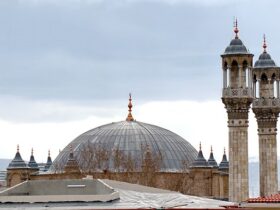Apartheid-a term still sending ripples down the corridor of history. It was never just a policy; it was a way of existence for millions in South Africa for almost five decades. Bravery among those who fought against it, sorrows of families torn apart, and rejoicing because of its demise grew up with me. But what was apartheid, and how did South Africa make that leap from such an odious system to democratic freedom? Travel through this remarkable chapter of history.
What Was Apartheid?
Imagine a country in which everything in your life, from where you can live to whom you can marry to which jobs you can hold, even to which schools your children attended, was determined by the color of your skin. That was the system of institutionalized racial segregation and discrimination practiced by the South African government from 1948 to 1994.
Apartheid was not instituted in one day. The founding of apartheid dates back to the 17th century under colonialism when white European colonists institutionally codified racist orders to keep natives in their place. By the start of the 20th century, these had evolved into legislation under apartheid, and thus an extremely divided society.
Everyday Life Under Apartheid
To those in South Africa who were persons of color, daily life was inhumane and always degraded under apartheid. Black families were forcibly removed from their homes and relocated to either “homelands” or segregated townships. Just imagine living in your house for generations; yet this government comes into your door, tells you to pack up, and then ships you off to a desolate land with absolutely nothing.
For black children, schools were poorly financed and overcrowded. I remember being introduced to a man named Thabo who said he had to study under a tree because his school was without classrooms. “We were taught to believe we were inferior,” he said. “But we knew deep down it was not true.”
The Resistance: Ordinary People, Extraordinary Courage
But even under repression, the people of South Africa would not sit and do nothing regarding their fate. The Resistance movements mushroomed with their leaders at the forefront-for example, Nelson Mandela, Oliver Tambo, and Walter Sisulu. Now, this is where the real significance of the ANC in this fight against Apartheid comes in: to make protests and strikes, and to organize international campaigns.
The one story that always makes me cry a lot is that of Soweto Uprising 1976. Thousands of students took to the streets demonstrating against being taught in Afrikaans language which most don’t speak or understand peacefully. Police came with bullets, and just slaughtered hundreds. I listen to one woman saying, “We marched with fear in our hearts, but hope in our souls.”
This work is copyrighted and is the property of Global Voices Online.
The Fall of Apartheid: Steps Toward Freedom
Change did not come about easily, nor did it come overnight. Countries instituted sanctions in the 1980s while anti-apartheid movements all over the world gained steam in protest. Protests inside the country escalated and, for the first time, the apartheid government was beginning to be confronted with growing unrest.
In 1990, a historic moment unfolded: Nelson Mandela was released after 27 years in prison. Four years later, South Africans of all races voted in the country’s first democratic election. I’ll never forget seeing photos of people standing in long lines, some waiting for hours, to cast their votes. One ancient woman said, “I’ve waited my whole life for this moment.”
From Pain to Progress: The New South Africa
This is not utopian post-apartheid South Africa; the economic inequalities and racial tension were still very much there. This, however, was a monumental achievement, it was a transition from segregation into democracy. The Truth and Reconciliation Commission operated by Archbishop Desmond Tutu allowed the victims and executioners both the time to narrate their story, which in itself allowed the process of healing and understanding to start.
I am always impressed every time I travel to South Africa because the rainbow nation is one illustration of what happens when people choose hope over hate and unity over division.
Lessons for the World
Although this paper is but one chapter in the annals of South African history, much is to be garnered from its universality. It is a call for human dignity to stand resolute in the face of injustice-even mountainous odds.
In Conclusion,The story of apartheid is one of sorrow and triumph, of pain and hope. It was a story of the dregs to which humanity may descend and the heights to which it can rise. The spirit of those who fought for freedom in South Africa inspires us whether in reflecting on history or building the future.


































Leave a Review